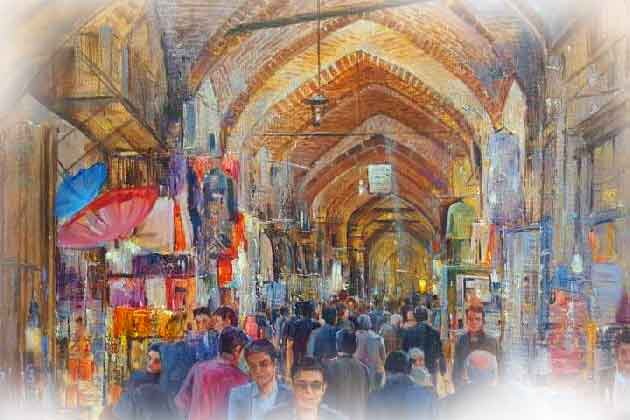Discover a city within another while in Isfahan

TEHRAN - In the heart of Isfahan, where time seems to stand still, lies arrays of vaulted traditional bazaars that have witnessed centuries of bustling commerce.
Those bazaars with a labyrinthine network of interconnected stalls and corridors may be more than just marketplaces. Some say they are living testimonies of the resilience of the human spirit.
Sometimes called “a city within another”, a bazaar usually contains a maze of lanes, madrasas, caravanserais, and timchehs (domed halls or arcaded centers of a single trade, such as carpet vendors or coppersmiths).
Dating from the Deylamites and Seljuk eras, those glorious structures reached their zenith during the illustrious Safavid dynasty. Despite the passage of time, these bazaars remain the vibrant economic axis of the ancient city, and within their walls, a remarkable legacy continues.
For centuries, generations of skilled artisans and astute merchants have called these bazaars their second homes. Passed down from generation to generation, the businesses here have weathered countless storms and historical upheavals.
Their resilience, however, may be a testament to the enduring spirit of entrepreneurship that flows through the veins of Isfahan's people.
As you stroll through the narrow alleys of those marketplaces, the air is infused with the scent of exotic spices, intricate textiles, and the warm aroma of freshly brewed tea wafting from the traditional teahouses.
Each shop is a treasure trove of craftsmanship, showcasing the skills honed over generations. Here, intriguing displays of Persian carpets, delicate ceramics, and shimmering jewelry may catch your eye at every turn.
You may meet a third-generation carpet weaver whose nimble fingers effortlessly bring intricate patterns to life. Next to them, a spice merchant proudly shares tales of their great-grandfather, who first established the shop, sourcing the finest saffron and sumac from the nearby fields.
Face-to-face conversations here may reveal the true essence of the bazaars for enquiring travelers. Beyond the tangible goods, they are repositories of collective memory, preserving the traditions and customs of bygone eras. The merchants, custodians of this rich heritage, pass down not only their trade secrets but also the stories that have been whispered through the generations.
Browsing through a traditional bazaar may provide new experiences and fresh points of view on the ancient land. Such excursions can be made either in person or by “off-the-beaten-track” tours. Not only is it an opportunity to discover dozens of unique local ingredients, but it's also a chance to taste street foods and delicacies in some traditional bakery known only by locals and shopkeepers.
People-watching and even mingling with the locals is one of the best ways to take the pulse of the country. Bazaar is a top choice to do so as they have traditionally been major economic and social centers in any Iranian city.
From another point of view, bazaars are also synonyms of foods, with their unmissable colorful stalls of vegetables, herbs, and spices. Yet, most of these ingredients might be mysterious to a foreign eye. Teahouses help punctuate the walk and a traditional restaurant is a perfect place for lunch.
As you leave the bazaars, the echoes of centuries past linger in your mind. The legacy of these traders, who have dedicated their lives to the preservation of their ancestors' trades, will continue to shape the destiny of Isfahan's bazaars for generations to come. Their unwavering commitment ensures that these hallowed halls will forever remain a vibrant symbol of the city's cultural and economic heritage.
Soaked in a rich history, Isfahan was once a crossroads of international trade and diplomacy in Iran and now it is one of Iran’s top tourist destinations for good reasons. The city is filled with many architectural wonders, such as unmatched Islamic buildings, bazaars, museums, Persian gardens, and tree-lined boulevards.
Many international travelers to the central Iranian city believe that it equals an endless charm by embracing so many diverse monuments, landscapes, and above all, hospitable people. The historical core of Isfahan is a masterpiece of Safavid-era architecture popularly known as “half of the world”, meaning seeing it is relevant to see the whole world.
AFM
Leave a Comment